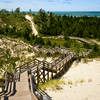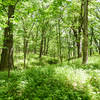
Land Manager: NPS - Indiana Dunes National Park
 Cowles Bog Trail
Cowles Bog Trail
4.7 mi 7.5 km • 202' Up 61.6 m Up • 202' Down 61.56 m Down




 Porter, IN
Porter, IN
 Bailly Chellberg - Little Calumet Loop
Bailly Chellberg - Little Calumet Loop
3.5 mi 5.6 km • 109' Up 33.36 m Up • 111' Down 33.93 m Down




 Porter, IN
Porter, IN
 Paul C. Zona Sr. Wildlife Sanctuary
Paul C. Zona Sr. Wildlife Sanctuary
1.4 mi 2.2 km • 54' Up 16.45 m Up • 54' Down 16.35 m Down




 Westville, IN
Westville, IN
 West Beach 3-Loop
West Beach 3-Loop
3.5 mi 5.7 km • 223' Up 67.94 m Up • 220' Down 66.94 m Down




 Ogden D…, IN
Ogden D…, IN
 Hobart Woodland Trail
Hobart Woodland Trail
2.2 mi 3.5 km • 40' Up 12.18 m Up • 40' Down 12.23 m Down




 Hobart, IN
Hobart, IN
 Warren Woods
Warren Woods
1.6 mi 2.6 km • 54' Up 16.46 m Up • 54' Down 16.42 m Down




 Three Oaks, MI
Three Oaks, MI






0 Comments